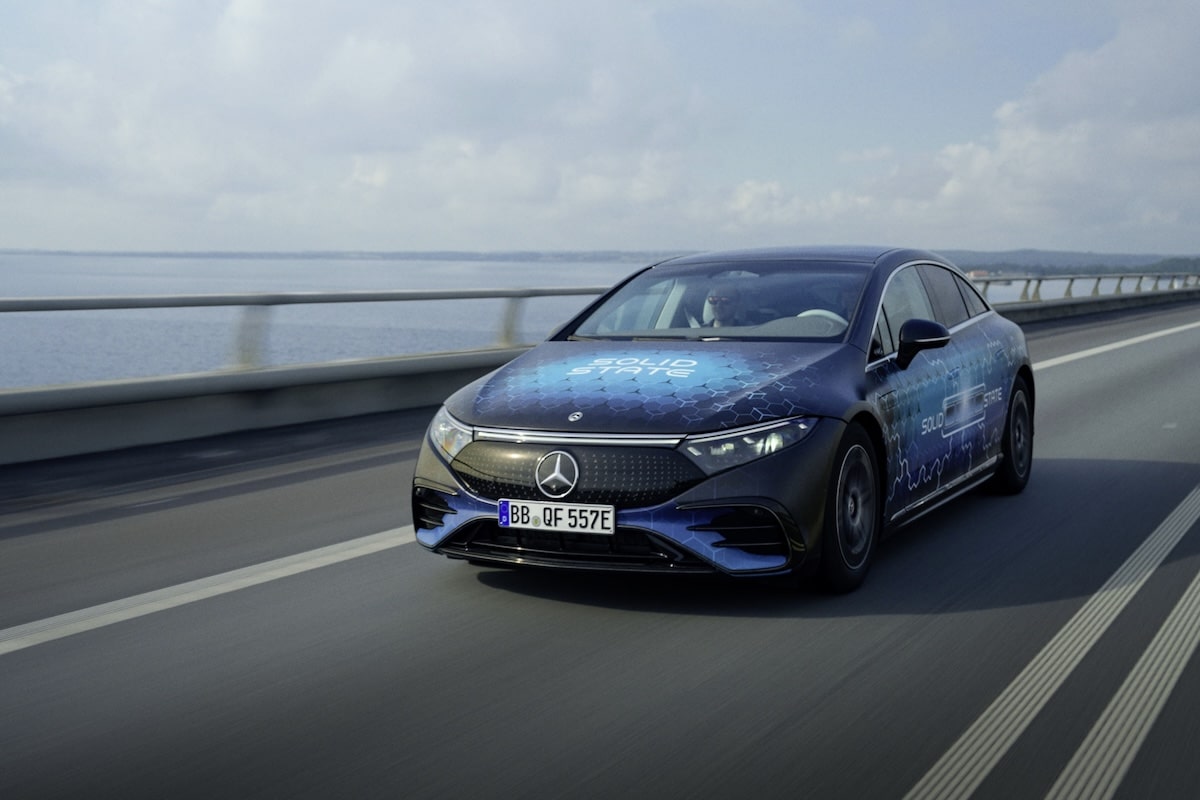Mercedes covers 1205 km with a charge, Tesla is left behind!

Contrary to its Asian and European rivals, Tesla does not believe in solid-state batteries. Is this a fatal technological error?
Long regarded as the vanguard of electric mobility, Tesla has built its reputation on clever communication and its lead in lithium-ion batteries. However, this lead is dangerously cracking.
While its competitors – German, Chinese, or Japanese – announce major advancements in next-generation batteries, Tesla appears trapped in a strategy that is reaching its limits. Since its beginnings, Elon Musk’s firm has always favored a pragmatic approach: optimizing existing lithium-ion chemistry rather than betting on risky breakthroughs. This choice has allowed it to accelerate production and reduce costs, notably using LFP (Lithium Iron Phosphate) cells from Chinese suppliers such as CATL or BYD. In its communications, Tesla emphasizes its own advancements – like the 4680 cells unveiled in 2020 – but the reality is more nuanced: the California brand remains dependent on its partners for the majority of its batteries. In pure chemistry, innovation is driven much more by its suppliers than by Tesla itself.

You might be interestedin this article:
A Tesla narrative that no longer works?
Tesla, like many of its competitors, purchases off-the-shelf technological solutions and implements them in its cars. Like a very large and complex Meccano. However, while the LFP chemistry is robust and economical, it is now showing its limits. Its energy density is capped, making it perfectly suited to compact and affordable models, but insufficient for high-end vehicles, long distances, or heavy SUVs. Tesla can compensate by optimizing the integration of the pack and the software, but these adjustments do not eliminate the need for a change in paradigm.
This change is being prepared by competitors. In China, CATL and BYD are innovating at a frantic pace with more efficient pack architectures (Qilin, Blade) and explorations into sodium-ion, a promising low-cost technology for mass markets. In Europe and Japan, attention is focused on solid electrolyte batteries, which offer an additional 30 to 50% energy density and increased safety.

Mercedes, for example, recently unveiled a prototype EQS equipped with a solid battery developed with the American startup Factorial Energy, promising 25% more range. A road trip from Malmö in Finland to Stuttgart in Germany was completed on a single charge, covering 1205 km… with 137 km of range still left! That potentially means up to 1342 km of range. More than double the best Teslas on the market!
Toyota, for its part, aims for industrialization of this technology by 2028. Which is tomorrow.
Tesla facing a technological wall
In light of this excitement, Tesla’s silence on the subject of solid batteries is noteworthy. Elon Musk has publicly downplayed their potential, asserting that the technology is “overvalued” as long as it is not scalable to mass production. The problem is that its competitors are making progress, even if mass production remains distant. The Palo Alto brand gives the impression of betting exclusively on improving existing technology, at the risk of being overtaken if industrial shifts occur in the latter half of the decade.

The future of batteries seems to be shaping up around two axes. On one hand, sodium-ion for entry-level models, particularly in Asia, with commercialization as early as 2025. On the other, solid lithium-metal, which could be industrialized around 2030 for premium vehicles. Between these two poles, LFP chemistry is at risk of losing its strategic appeal.
In the chemistry wars, Tesla no longer holds the trump cards. If Mercedes, Toyota, CATL, or BYD can turn their promises into industrial realities, Tesla will find itself for the first time in the position it has always feared: that of a follower.
READ ALSO: Tesla has made a radical decision regarding its Cybertruck
This page is translated from the original post "Mercedes parcourt 1205 km avec une charge, Tesla est largué !" in French.
We also suggestthese articles:
Also read





